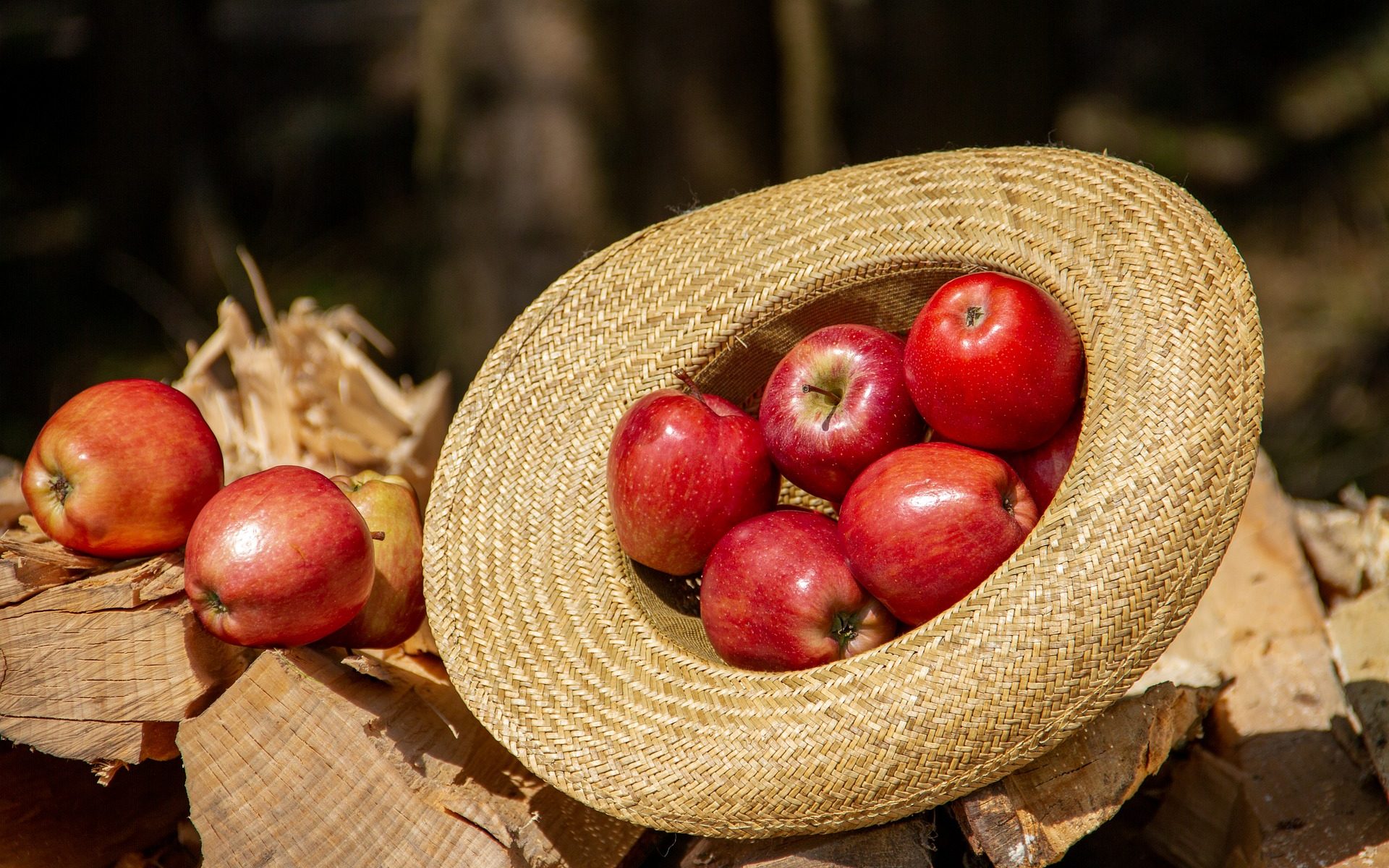The Apple is the most widely distributed fruit type; it occupies almost 30 % of the area of orchards, in towns and in village yards. It is grown in almost the whole country. This is due to the large and level of its fruitfulness, the lengthy period of ripening for the different varieties, the very good keeping qualities and stability in transportation.
Fresh apple fruit have a high nutritional and dietetic value. They contain from 5 to 23 % easy dissolved sugars, from 0,17 to 1,2 % organic acids, vitamins, pectin, tanning substances and other food ingredients.
Biological and botanical peculiarities
Grafted on a strong-growing pad, the apple forms a powerful crown with a height of up to 8 – 10 m., width of 10-12m. The duration of life is over 70-80 years. In these cases the individual varieties come in production after 6-8 years. When using the weak, slow-growing pads fruits occur to the 2nd- 4-th year, crowns are smaller and production period is 25-30 years.
The apple has a sustainable standstill and blooms relatively late. All varieties require outside pollination and some of them as the Canadian Reneta, Boskop girl, Skrinyanka. etc. are poor pollinators and must be planted with at least two more varieties.
The temperature conditions in our country are not a restricting factor for the apple. In the winter period it lasts up to -30, -32°C, as only with certain varieties (Canadian Reneta, Landberg Reneta, Karastoyanka, etc.) fruit buds freeze to death at temperatures below -30°C. Comparatively more frequent frostbite are observed during the period of the buttoning and the flowering stage when temperatures from – 1 to – 4°C can inflict considerable damage.
The apple is demanding to soil and air moisture, due to which it is good to be grown in irrigated conditions. If there is no possibility to be irrigated, it should be planted on moisture preserving plots in personal plots of land. This particularly applies to plants, grafted on low and tempetate-growing pads. In such cases better results are achieved with trees grafted on wild species or plants grown from seeds cultivated varieties. Excess soil moisture also prevents the normal development of the apple.
Most appropriate are moderately wet soils, deep, permeable and rich in nutrients soils. Especially unsuitable are strongly sandy, stony and heavily loamy soils and plots with higher than 1,50 – 2m. level of groundwater.
Varieties
For the time being in Bulgaria there have been validated for propagation about 26 varieties. Depending on the period of ripening they are divided into summer and autumn-winter sorts. Summer varieties have limited distribution. They ripe in July-August and by the period of ripening are arranged as follows: Vista Bela, Primrouge, Моlly’s Delicious and Prima. Autumn-Winter varieties mature in September-October in the following sequence: Оzark gold, English Green Reneta , Star Crimson, Cooper-4 (the last two are variations of Red Delicious), Landberg Reneta, Winter banana. Smoothie, Bell Golden, Моrspur Golden (the last three are variations of Golden Delicious), Меllrose, Johnna Gold, Jonathan, Coop 17, Shtarden, Мutsu, Каrastoyanka, Splendour, Fudgy, Ivania, Starck, Democrat, Greny Smith. The last seven sorts do not have a very good qualities and good looks, but they shall be kept very well in ordinary conditions until February and March. For personal farms there deserve attention sorts as Canadian Reneta, Yellow Bellfleur, Skrinyanka, Berne pink, Тetovka, Gypsy woman, Golden Dits Reneta, White winter Calville, York Imperial, etc.
The cultivation
The distances of planting in the apple shall be determined by the type of pad used, the variety, the type of crown, the soil, the climatic conditions, the manner of maintenance of the soil surface, etc. To extrapolate from all this, in the rows distances vary from 1,5 to 5-6 m. and in between the rows – from 3 to 7-8 m.
The most appropriate crowns for apple trees are the free-growing bush on a slow-growing pad; one-storey palmetto on moderate-growing pads and improved-storey crown at fast-growing pads.
In the young apple gardens of personal farms there are almost regularly different types of intermediate crops grown. In these cases plant protection must be carried out carefully. After the crowns develop fully and occupy the whole area, the cultivation of such crops is unjustified. It is best for the area to be kept black fallow. When there is sufficient moisture and fertilizing apples may be grown and by artificial aching, and the grass is cut regularly and is left dispersed over the entire surface area.
The apple is attacked by many diseases and enemies against which regular combat actions are undertaken as per the instructions of the plant protection services. Of the mushroom diseases the most dangerous and most widely distributed are the scab, the powdery mildew and late brown rot. A lot of viral diseases are known too. From the enemies the most often met and the one causing the most damage is the apple fruit worm, fruit mites, the leaf, blood and shield lice, the caterpillars, the bark-eaters, leaf-mining moths, etc.
